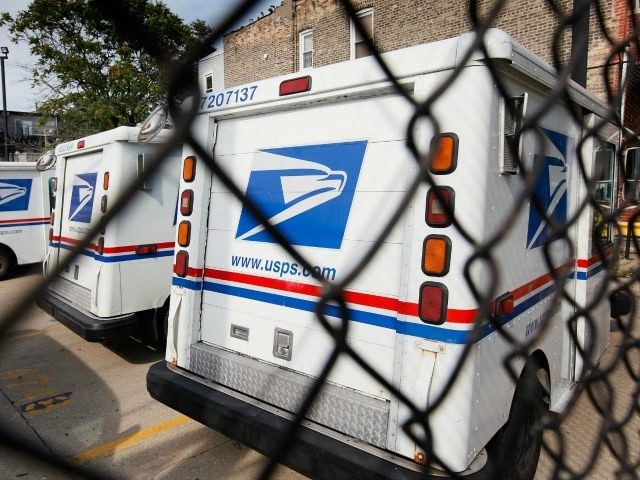If you take away missing yet another payment into its pension and retiree health fund, a huge increase in workers’ compensation payments because of unusual accounting practices and a temporary price hike proving, for once, to actually be temporary, the Postal Service had an OK second quarter.
Revenue of $17.8 billion, up 4.7 percent over 2015 levels, outstripped expenses of $17.2 billion, and the Postal Service reported $576 million in what it calls “controllable income.” That’s up from $313 million in “controllable income” during the same period of 2015.
So, you’re thinking, “Hey, a second straight profitable quarter. Good for USPS.” But no. Because of the prefunding requirement and other long-term expenses not accounted for in the “controllable income” category, the USPS posted a net loss of $2 billion, compared to a $1.5 billion loss last year.
According to the Postal Service, the red ink went up because of “a $547 million unfavorable change in the workers’ compensation expense as a result of interest rate changes – a factor outside of management’s control.”
The chief financial officer said the cost resulted from the Postal Service using an accounting method that did not meet General Acceptable Accounting Practices and had to be changed. The change “distorts financials rather than enhances them,” the chief financial officer said.
Postmaster General Megan Brennan said another $1 billion went off the books this year and $2 billion per year thereafter because Congress allowed an “exigency surcharge” established to help the Postal Service survive the recession to expire on schedule in April. Reinstating the surcharge – 2 cents per first-class stamp – would enable the Postal Service to force through a rate increase without going through the normal rate-setting procedures. Nevertheless, it is a key goal for Brennan as postal reform legislation moves through Congress.
That legislation is farther along in the Senate right now than the House, but the House Committee on Oversight and Government Reform did hold a hearing in the last week at which Brennan outlined the Postal Service’s goals. In addition to restoring the 49-cent stamp, she would like to require postal employees to use Medicare as their primary insurance, use “postal-specific assumptions” to calculate retirement benefits, and address some “limited product flexibility.”
The Medicare provision would mean taxpayers would pick up some health care expenses for the 617,000 employees of the supposedly independent Postal Service. These monopolistic benefits give the Postal Service a leg up on private competitors in its market-competitive products, all at taxpayer expense.
This is a familiar scene. The Postal Service, which lost nearly $7 billion last year and has lost $51 billion since 2007, pays nothing in property tax, nothing in licensing or sales taxes for its vehicles and no state or federal taxes, even on its competitive products. It does pay federal tax on income from those products, but it pays those taxes to itself.
It does struggle to meet the benefits prefunding requirements set in the 2006 postal reform legislation. The payment amounts were set up when volume was 28 percent higher and electronic payment methods were in their infancy. But it has defaulted on these payments every quarter since 2011, and Brennan said the Postal Service could not function if it were required to make the payments today.
But even if Congress addresses the prefunding challenge, it won’t eliminate the expense of providing pensions and health care for retirees. And even if it fixes its accounting problem, it still will owe a substantial amount for workers’ compensation.
Brennan says the Medicare reform in her proposal to Congress would save $17 billion a year and the entire package would save $32 billion.
But it’s the same as “controllable income.” “Calculation of controllable income takes into account the impact of operational expenses including compensation, benefits and work hours; but does not reflect factors such as the legally mandated expense to prefund retiree health benefits,” the Postal Service stated in its release.
In other words, the Postal Service has a dandy little balance sheet because it has decided to make its own rules with regard to what it considers an expense – and what constitutes spending on its competitive products and those, such as first-class mail delivery, in which it has a congressionally protected monopoly.
It enhances its numbers by shifting blame and expenses elsewhere. Contributing to retirement funds is not an option for businesses with 617,000 employees. Calculating your balance sheet with General Accepted Accounting Practices isn’t either. Nor is making long-term plans for short-term infusions of cash.
The news coming out of the Postal Service is much more of the same: traditional letter mail is its most profitable product; standard mail, flats and packages struggle to break even and come close only because of benefits conferred by the monopoly-protected side, and its more exotic offerings – grocery delivery, fish delivery, same day delivery – can’t be justified economically.
With so many challenges ahead there certainly won’t be good news until the Postal Service and Congress tackle its problems and narrow its scope.

COMMENTS
Please let us know if you're having issues with commenting.